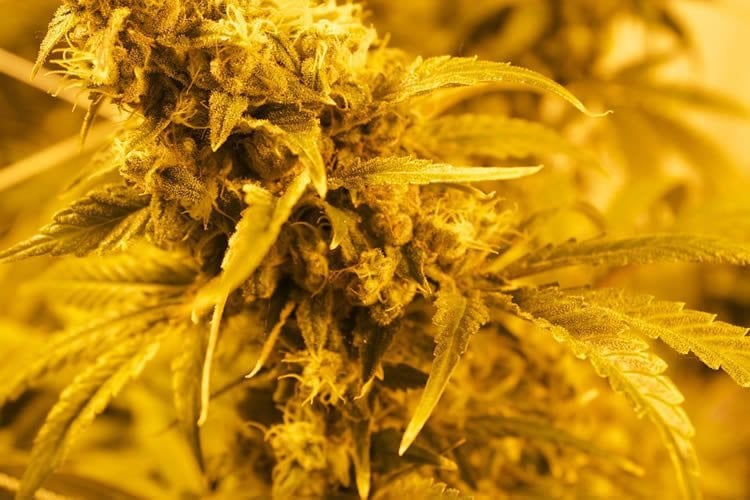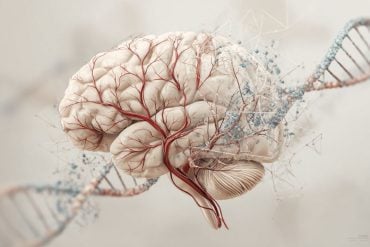Summary: Researchers report 1 in 10 people who are heavy cannabis users experience cannabis withdrawal syndrome upon quitting.
Source: Columbia University.
As the number of Americans who regularly use cannabis has climbed, so too has the number of those experiencing cannabis withdrawal symptoms. A new study by researchers at the Columbia University Mailman School of Public Health and Columbia University Irving Medical Center finds that 12 percent of frequent marijuana smokers experienced Cannabis Withdrawal Syndrome (CWS), which includes emotional, behavioral and physical symptoms. The study is published in the journal Drug and Alcohol Dependence.
CWS was first included in the Diagnostic and Statistical Manual of Mental Disorders in its most recent edition, DSM-5, published in 2013. The new study is the first large-scale report on the link between CWS and DSM-5 psychiatric disorders among frequent U.S. adult cannabis users.
“In a rapidly changing landscape of marijuana laws and attitudes, cannabis use continues to increase among American adults. As a result, more information on the prevalence and correlates of clinical withdrawal in the general population is of critical importance,” said Deborah Hasin, PhD, professor of Epidemiology at Columbia Mailman School of Public Health.
Study participants were interviewed as part of the 2012-2013 National Epidemiologic Survey on Alcohol and Related Conditions-III (NESARC-III), the only nationally representative survey that measures clinically diagnosed cannabis withdrawal syndrome, which encompasses six psychological symptoms and one or more physical symptoms. Face-to-face interviews in respondents’ homes were conducted with 36,309 participants. The final analysis was based on 1,527 participants who were frequent cannabis users, defined as using the drug three or more times a week during the year prior to the interview.
CWS symptoms were associated with numerous psychiatric disorders, significant mental disability, and a family history of depression. Psychiatric disorders included mood disorders; anxiety disorders, including social phobia, agoraphobia, and panic disorder; personality disorders; and post-traumatic stress disorder.
Among withdrawal symptoms, the most commonly reported were nervousness/anxiety (76 percent), hostility (72 percent), sleep difficulty (68 percent) and depressed mood (59 percent). While physical symptoms were reported less frequently than behavioral and emotional symptoms, headaches, shakiness/tremors, and sweating were also prevalent.
Frequent cannabis users were primarily male (66 percent), white (59 percent), aged 18-29 (50 percent), college educated (49 percent), never married (54 percent), and with low household income (45 percent). While frequency of use (within a week) was not significantly associated with withdrawal symptoms, the number of joints smoked per day was significantly associated with withdrawal symptoms.
Cannabis withdrawal syndrome was not significantly associated with family history of drug or alcohol problems, but significantly associated with family history of depression.
“Cannabis withdrawal syndrome is a highly disabling condition,” noted Hasin, who is also a professor in the Department of Psychiatry. “The syndrome’s shared symptoms with depressive and anxiety disorders call for clinician awareness of cannabis withdrawal symptoms and the factors associated with it to promote more effective treatment among frequent cannabis users.”

In an earlier study by Hasin and colleagues (LINK TK), cannabis withdrawal symptoms were prevalent and associated with psychiatric disorders and intensity of cannabis use. However, at that time,NESARC did not cover the DSM-5 cannabis withdrawal symptoms. As a new diagnosis, much remains to be learned about DSM-5 CWS, according to Hasin and colleagues.
“Most users of the newer modes of administration–vaping and edibles–also smoke cannabis. Therefore, for users in modes other than smoking, the amount of consumption could be underestimated,” said Hasin. “Given the increase in cannabis potency in recent decades, developing reliable measures to investigate the effect of cannabis concentration and mode of administration will be important in advancing our understanding of cannabis withdrawal syndrome.”
Funding: The study of cannabis withdrawal was supported by the National Institute on Drug Abuse. The NESARC-III survey was supported by the National Institute on Alcohol Abuse and Alcoholism (NIAAA) with supplemental support by the National Institute on Drug abuse, and by the Intramural Research Program of the NIAAA.
Source: Stephanie Berger – Columbia University
Publisher: Organized by NeuroscienceNews.com.
Image Source: NeuroscienceNews.com image is in the public domain.
Original Research: The study will appear in
[cbtabs][cbtab title=”MLA”]Columbia University”One in Ten Heavy Cannabis Users Experience Withdrawal After Quitting.” NeuroscienceNews. NeuroscienceNews, 22 October 2018.
<https://neurosciencenews.com/withdrawal-cannabis-10066/>.[/cbtab][cbtab title=”APA”]Columbia University(2018, October 22). One in Ten Heavy Cannabis Users Experience Withdrawal After Quitting. NeuroscienceNews. Retrieved October 22, 2018 from https://neurosciencenews.com/withdrawal-cannabis-10066/[/cbtab][cbtab title=”Chicago”]Columbia University”One in Ten Heavy Cannabis Users Experience Withdrawal After Quitting.” https://neurosciencenews.com/withdrawal-cannabis-10066/ (accessed October 22, 2018).[/cbtab][/cbtabs]






